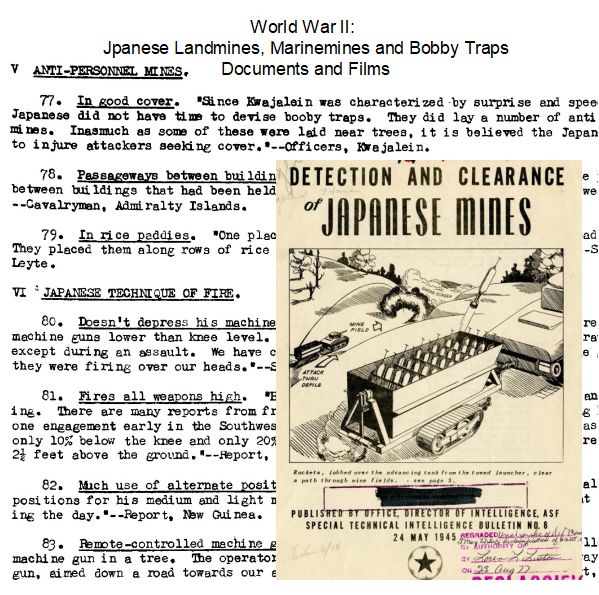
World War II: Japanese Landmines, Marinemines and Bobby Traps Documents and Films
$19.50
Description
Japanese Explosive Ordnance: A WWII Intelligence Timeline
The sources primarily document the intelligence gathering, analysis, and tactical responses to Japanese weaponry, particularly mines and booby traps, during World War II, with a significant focus on the Pacific Theater and specific battles.
- December 12, 1943: The War Department’s Military Intelligence Division releases “Japanese Infantry Weapons, Special Series, Number 19.” This study provides a concise description of various Japanese infantry weapons, including grenades and landmines, aiming to inform Allied forces.
- 1944 (General):
- The Division of Naval Intelligence; Mine Warfare Section, Base Maintenance Division produces “ONI 223D: Mine Warfare.” This pamphlet aims to familiarize field personnel with ships, equipment, and methods used in modern mining and minesweeping operations, emphasizing accurate observation and analysis of enemy mine warfare activities.
- Intelligence Bulletins begin to be published by the War Department’s Military Intelligence Service, providing intelligence on foreign military forces to junior officers and enlisted men, covering topics like weapons, strategy, and tactics. (This series continues through August 1945).
- Engineer Technical Bulletins are published by the Engineer Headquarters, Fifth Army, addressing topics like mines, booby traps, demolitions, and other field defense works. (This series continues through April 5, 1945).
- May 1944: Supreme Headquarters, Allied Expeditionary Force, Office of Assistant Chief of Staff, G2, produces “Technical Intelligence Summary (Enemy Weapons and Equipment), No. 1.” This is the first in a series intended to provide up-to-date technical intelligence in an easily readable form to lower formations, covering mines, demolition equipment, tanks, artillery, and small arms.
- 1944 (Films): The Army’s Office of the Chief Signal Officer creates “Film: Japanese Grenades and Mines.” This 19-minute film describes and demonstrates the use and decommissioning of six specific Japanese weapons: fragmentation (hand) grenade, stick mine, magnetic mine, Type 93 mine, Dutch mushroom-top mine, and the double-horned beach mine, often using diagrams.
- January 1, 1945: The United States Army, 6th, publishes “Japanese Land Mines.” This compilation provides condensed information on Japanese landmines encountered to date, warning troops to remain alert for new enemy developments and improvisations in mine warfare.
- March 23, 1945: G2, USAFPOA, releases “Intelligence Bulletin, Number 12.” This bulletin covers Pacific Theater actions, including the Iwo Jima operation, the Japanese 88mm AA gun, changes in suicide doctrine, Japanese combat instructions, reactions to propaganda, and tactics and strategy.
- April 1945: The Engineer Section, Headquarters Eighth Army, publishes “Engineer Intelligence Bulletin No. 2.” This bulletin highlights the latest trends in Japanese mines and obstacle tactics, covering operations such as the Cebu landing, Japanese mines on Negros Occidental, and the Zamboanga landing. It notes the increasing use and improving technique of Japanese mines, often combined with effective engineer obstacles and protected shelters.
- April 15, 1945: The Office of the Headquarters, Fleet Marine Force, Pacific, publishes “Annex How to Fourth Marine Division Operations Report, Iwo Jima: RCT 25 Report.” This report details the activities of Combat Team Twenty-Five, 4th Marine Division, during the Iwo Jima Operation, covering planning, ship movements, the landing assault, combat narrative, administration, casualties, intelligence, supply, and communications.
- May 1, 1945: Headquarters, European Theater of Operations, United States Army, produces “Battle Experiences Against the Japanese.” This pamphlet compiles material on combat methods used by and against the Japanese, as well as the effects of physical and climatic conditions in the theaters where fighting occurred, with an emphasis on value for individuals and smaller units.
- May 24, 1945: The Office, Director of Intelligence, ASF, publishes “Detection and Clearance of Japanese Mines.” This Special Technical Intelligence Bulletin notes the increased Japanese use of mines in the Pacific, posing a major problem for American forces. It highlights that Japanese mines have characteristics radically different from German models, affecting clearance principles (e.g., resistance to explosives, lower detonation pressure, pinpoint detonators). It calls for close cooperation from the field to develop effective clearance equipment.
- Undated (1945), but post-April 1945: The Engineer Section, Headquarters Eighth Army, publishes “Engineer Intelligence Bulletin No. 3.” This bulletin focuses on specific information about Japanese land mines and fortifications obtained from operations in the Southwest Pacific Area (SWPA). It includes reports from Cebu and Zamboanga, details on anti-withdrawal fuses (Japanese naval torpedo exploders and tail fuses used in landmines), and various Japanese mine uses (booby-trapped ammunition dumps, depth charge road blocks, improvised artillery shell landmines, electrically fired controlled road mines, pressure bar road mines, and controlled mine fields).
- June 11, 1945: The Joint Intelligence Center Pacific Ocean Areas releases “Japanese Antitank Warfare, ‘Know Your Enemy!’ CinCPac-CinCPOA Bulletin 144-45.” This document provides pertinent data on Japanese antitank tactics and weapons used against Allied armored forces.
- August 15, 1945: The United States Office of the Chief of Naval Operations publishes “Handbook of Japanese Explosive Ordnance (OpNav 30–3M).” This revised reprint of a Southwest Pacific Area field publication is designed to instruct personnel in the recognition of dangerous ordnance. It explicitly states it is not a manual for mine and bomb disposal.
- Undated (1945), but likely after Iwo Jima operations conclude: The United States Marine Corps, 4th Division, 4th Engineer Battalion, produces “Annex King to Fourth Marine Division Operations Report, Iwo Jima: 4th Engineer Battalion Report.” This report details the battalion’s activities during the Iwo Jima operation, including planning, movement, landing, operational narrative, mine removal, road construction, water supply, administration, intelligence, and supply, with photographs and illustrations of Japanese mines.
- Undated (Films): Additional films copied from the National Archives cover the disarming of Japanese bombs and mines, showing action on Guam and Iwo Jima.
Cast of Characters
The provided sources are primarily institutional and military intelligence documents, rather than personal narratives, so they do not list individual “characters” in the traditional sense. However, the “principle people” mentioned are in terms of the organizations or roles responsible for creating and disseminating the information.
- War Department’s Military Intelligence Division: Responsible for producing intelligence studies and bulletins, such as “Japanese Infantry Weapons, Special Series, Number 19” and the “Intelligence Bulletin” series. These documents aimed to inform Allied personnel about enemy capabilities and tactics.
- Supreme Headquarters, Allied Expeditionary Force, Office of Assistant Chief of Staff, G2: Produced “Technical Intelligence Summary (Enemy Weapons and Equipment),” designed to disseminate up-to-date technical intelligence to lower military formations.
- Division of Naval Intelligence; Mine Warfare Section, Base Maintenance Division: Created “ONI 223D: Mine Warfare” to educate naval personnel on modern mining and minesweeping operations, aiding in the observation and analysis of enemy activities.
- Engineer Headquarters, Fifth Army: Published the “Engineer Technical Bulletin” series, providing vital engineering intelligence on topics like mines, booby traps, and demolitions.
- United States Army, 6th: Published “Japanese Land Mines,” a compilation of information on mines encountered, emphasizing the need for constant vigilance against new enemy developments.
- Office, Director of Intelligence, ASF (Army Service Forces): Issued “Special Technical Intelligence Bulletin Number 8: Detection and Clearance of Japanese Mines,” highlighting the challenges posed by unique Japanese mine characteristics and calling for cooperation in developing clearance equipment.
- United States Marine Corps. 4th Division, 4th Engineer Battalion: Produced “Annex King to Fourth Marine Division Operations Report, Iwo Jima: 4th Engineer Battalion Report,” detailing their specific operational experiences, particularly mine removal, during the Iwo Jima campaign.
- Headquarters, European Theater of Operations, United States Army: Produced “Battle Experiences Against the Japanese,” compiling combat methods and the effects of environmental conditions in the Pacific theaters.
- Engineer Section, Headquarters Eighth Army: Published “Engineer Intelligence Bulletin” numbers 2 and 3, detailing the latest trends in Japanese mine and obstacle tactics based on operations in specific Pacific locations like Cebu, Negros Occidental, and Zamboanga.
- G2, USAFPOA (United States Army Forces, Pacific Ocean Areas): Released “Intelligence Bulletin, Number 12,” covering various aspects of Pacific Theater actions, including Iwo Jima.
- Joint Intelligence Center Pacific Ocean Areas (CinCPac-CinCPOA): Released “Japanese Antitank Warfare, ‘Know Your Enemy!’ CinCPac-CinCPOA Bulletin 144-45,” providing data on Japanese antitank tactics and weapons.
- Office of the Headquarters, Fleet Marine Force, Pacific: Published “Annex How to Fourth Marine Division Operations Report, Iwo Jima: RCT 25 Report,” detailing the experiences of a specific Regimental Combat Team during the Iwo Jima Operation.
- United States Office of the Chief of Naval Operations: Published “Handbook of Japanese Explosive Ordnance (OpNav 30–3M),” a manual for identifying dangerous Japanese ordnance.
- Army’s Office of the Chief Signal Officer: Created instructional films, such as “Japanese Grenades and Mines,” to visually demonstrate enemy weapon characteristics and decommissioning methods.
Note: The sources emphasize the collective efforts of military intelligence and engineering units rather than focusing on specific individuals. The “characters” are thus the organizational bodies that generated and disseminated this critical information to Allied forces during WWII.
World War II: Japanese Landmines, Marinemines and Bobby Traps Documents and Films
2,623 pages in 32 documents and 39 minutes of films concerning Japanese use and detection of Japanese landmines, marinemines, and bobby traps during World War II. Documents concern intelligence on Japanese usage of the ordinances, the engineering of the methods to mitigate the weapons. Much attention is given to combat on Iowa Jima.
This collection includes:
Japanese Infantry Weapons, Special Series, Number 19. (1943)
Released on December 12, 1943, by the War Department’s Military Intelligence Division.
Abstract: The purpose of this study is to provide a concise description of Japanese infantry weapons. Contents include nomenclature, pistols and rifles, grenades and landmines, grenade dischargers, machine guns, mortars, antitank and infantry guns, and small arms ammunition.
Technical Intelligence Summary (Enemy Weapons and Equipment), No. 1, May 1944
Produced in May 1944 by the Supreme Headquarters, Allied Expeditionary Force, Office of Assistant Chief of Staff, G2.
Abstract: The first of a series of such summaries, with the intent they were issued down to regiments/brigades and were designed to give lower formations up-to-date technical intelligence in an easily readable form. Topics include tanks, equipment, artillery, small arms, grenades, etc., rocket weapons, mines, demolition equipment, and a miscellaneous section.
ONI 223D: Mine Warfare (1944)
Produced by the Division of Naval Intelligence; Mine Warfare Section, Base Maintenance Division in 1944.
Abstract: This pamphlet has been prepared for the purpose of familiarizing personnel in the field with the ships, equipment, and methods employed in modern mining and minesweeping operations. The types of mines, mine fields, minelayers, and minesweepers used in mining and sweeping operations have been illustrated with a view to providing a background for accurate observation of enemy mine warfare activities and for analysis of reports and reconnaissance photographs.
Intelligence Bulletin Volume III, Numbers 1,2-10,11 (1944-45)
10 issues of Intelligence Bulletins published by the War Department’s Military Intelligence Service from September 1944 to August 1945. These Intelligence Bulletin were produced to furnish intelligence on foreign military forces to the junior officers and enlisted men of the Regular Army. Subjects include weapons, strategy, and tactics.
Engineer Technical Bulletin Volumes 22-29 (1944-1945)
8 issues of the Engineer Technical Bulletin published by the Engineer headquarters, Fifth Army. Bulletins number 22 to 29, published from August 8, 1944, to April 5, 1945.
Sections include mines, booby traps, and demolitions; other field defense works; communications (roads and railroads); bridges (fixed and floating); water supply; camouflage; general construction; engineer supply; equipment; publications; and miscellaneous.
Japanese Land Mines (1945)
Published on January 1, 1945, by the United States. Army. Army, 6th.
Abstract: This publication is a compilation in condensed form of information on Japanese Land Mines encountered to date. The enemy may have other mines not yet encountered, and he is clever at improvising. Troops should be constantly on the alert tor new developments by the enemy in mine warfare.
Detection and Clearance of Japanese Mines (1945)
Special Technical Intelligence Bulletin Number 8, published on 24 May 1945, by the Office, Director of Intelligence, ASF
Abstract: The Japanese have increased their use of mines to the point where mine detection and clearance has now become a major problem for American forces advancing in the Pacific. The problem of clearing them is greatly complicated by the fact that some of the Japanese mines encountered have characteristics radically different from those used by the Germans. These differences affect all present principles of mine clearance. For instance, some Japanese mines are more resistant to explosive charges than the German models; others detonate under much less pressure or have pin-point detonators which might escape a disk-type mine exploder only to be set off by the tracks of a tank in the same path. All agencies concerned with this problem have turned their full attention to these problems and will need the closest cooperation and assistance from the field in order to produce effective equipment for the passage of mine fields.
Annex King to Fourth Marine Division Operations Report, Iwo Jima: 4th Engineer Battalion Report (1945)
Produced by the United States. Marine Corps. 4th Division, 4th Engineer Battalion
Abstract: This is the report of the 4th Engineer Battalion, 4th Marine Division, including planning and preparation, movement to objective, landing, narrative of operations, mine removal, road construction, water supply, administration, intelligence, and supply. Contains photographs and illustrations of Japanese mines.
Battle Experiences Against the Japanese, 1 May 1945
Produced by the Headquarters, European Theater of Operations, United States Army
Abstract: This pamphlet presents material or combat methods used by and against the Japanese and on the effects upon combat of the physical and climatic conditions existing in the theaters where they have been fought. It is designed to assemble in convenient form all available material on these subjects with particular attention to matters of value to the individual and smaller unit.
Engineer Intelligence Bulletin No. 2. Engineer Section, Headquarters Eighth Army (1945)
Published by the Engineer Section, Headquarters Eighth Army in April 1945.
Abstract: Includes: the latest trends in Japanese mines and obstacle tactics and technique; Cebu landing; Japanese mines on Negros Occidental; and Zamboanga landing. In summation, the latest operations indicated that the enemy was using an increasing number of mines, and that mine technique was improving gradually, etc., as well as combining effective engineer obstacles with protected shelters and weapons emplacements.
Engineer Intelligence Bulletin No. 3. Engineer Section, Headquarters Eighth Army (1945)
Published by the Engineer Section, Headquarters Eighth Army in 1945.
Abstract: Contents are limited to certain specific information on Japanese use of land mines and fortifications obtained during operations in the SWPA. There is an editorial to the troops, general reports from operational areas (Cebu and Zamboanga), anti-withdrawal fuses (Japanese naval torpedo exploders used in land mines and Japanese tail fuse), and Japanese use of mines (booby trapped ammunition dump, depth charge road block, improvised ‘artillery shell’ land mine, electrically fired controlled road mine, pressure bar used in road mine, controlled mine field, etc.)
Intelligence Bulletin, Number 12, 23 March 1945 – G2, USAFPOA (1945)
Abstract: This intelligence bulletin covers the Pacific Theater actions during World War Two. Topics from articles and briefs include Iwo Jima operation, the Japanese 88mm AA gun, change in suicide doctrine, Japanese combat instructions, reactions to propaganda, tactics and strategy, etc.
Japanese Antitank Warfare, “Know Your Enemy!” CinCPac-CinCPOA Bulletin 144-45 (1945)
Released on 06-11-1945 by the Joint Intelligence Center Pacific Ocean Areas.
Abstract: This document includes pertinent data on Japanese antitank tactics and weapons used against Allied armored forces.
Annex How to Fourth Marine Division Operations Report, Iwo Jima: RCT 25 Report (1945)
Published on 15 April 1945 by the Office of the Headquarters, Fleet Marine Force, Pacific.
Abstract: This report covers the activities of Combat Team Twenty-Five, of the 4th Marine Division, during the Iwo Jima Operation, from inception to conclusion. Including planning and preparation, ship movements, landing assault, operation narrative, attack progress, administration and personnel, casualties, intelligence, supply, and communications.
Handbook of Japanese Explosive Ordnance (1945)
OpNav 30–3M 15 August 1945
Published by the United States Office of the Chief of Naval Operations in 1945.
Abstract: This publication is a reprint with slight revisions of a field publication, Japanese Explosive Ordnance, originally published in the Southwest Pacific Area by Mobile Explosives Investigation Unit No. 1 under the auspices of the Commander, Seventh Fleet. Revisions have been held to an absolute minimum to meet urgent operational requirements for this manual by military and naval personnel.
Handbook of Japanese Explosive Ordnance is a manual designed to instruct personnel in the recognition of dangerous ordnance. It is not intended to serve as a handbook for mine and bomb disposal. This publication is to be handled in accordance with Art. 76, U. S. Navy Regulations.
FILMS
3 reference copies of films copied from the National Archives at College Park, Maryland – Motion Pictures Section, with a total of 39 minutes of running time.
The films cover disarming Japanese bombs & mines. The films show action on Guam and Iwo Jima.
Films include:
Film: Japanese Grenades and Mines (1944)
A 19-minute film created by the Army’s Office of the Chief Signal Officer. The film describes six weapons: fragmentation (hand) grenade, stick mine, magnetic mine, type 93 mine, Dutch mushroom-top mine, and the double-horned beach mine. Demonstrates how the weapons are used, explains their operation, and shows how they can be decommissioned. Uses diagrams in explaining how the weapons function.
Related products
-
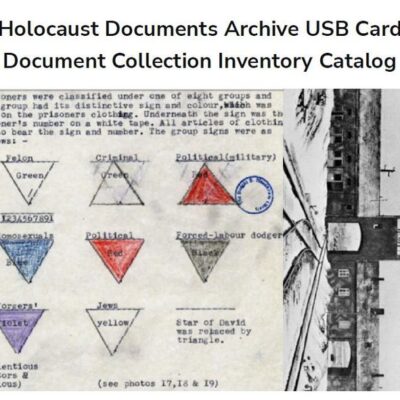
Holocaust Document Archive PDF file – Inventory Catalog of Document Collection
$3.94 Add to Cart -
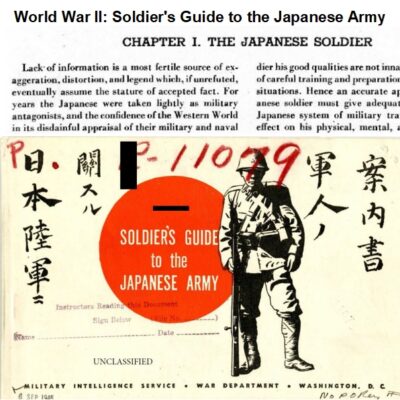

World War II: A Soldier’s Handbook on the Japanese Army
$3.94 Add to Cart -
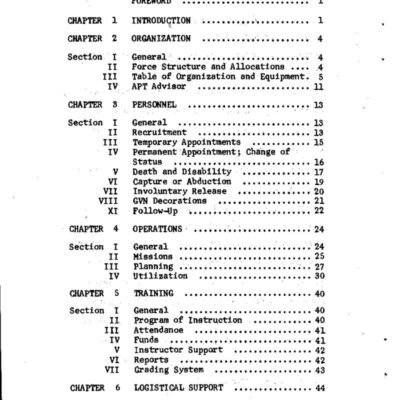
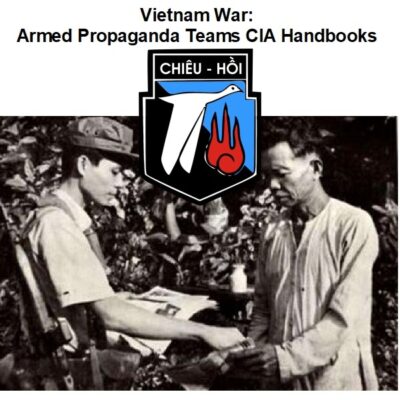
Vietnam War: Armed Propaganda Teams CIA Handbooks
$1.99 Add to Cart -

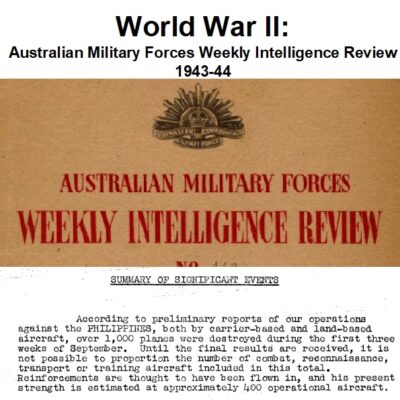
World War II: Australian Military Weekly Intelligence Reports 1943-44
$3.94 Add to Cart